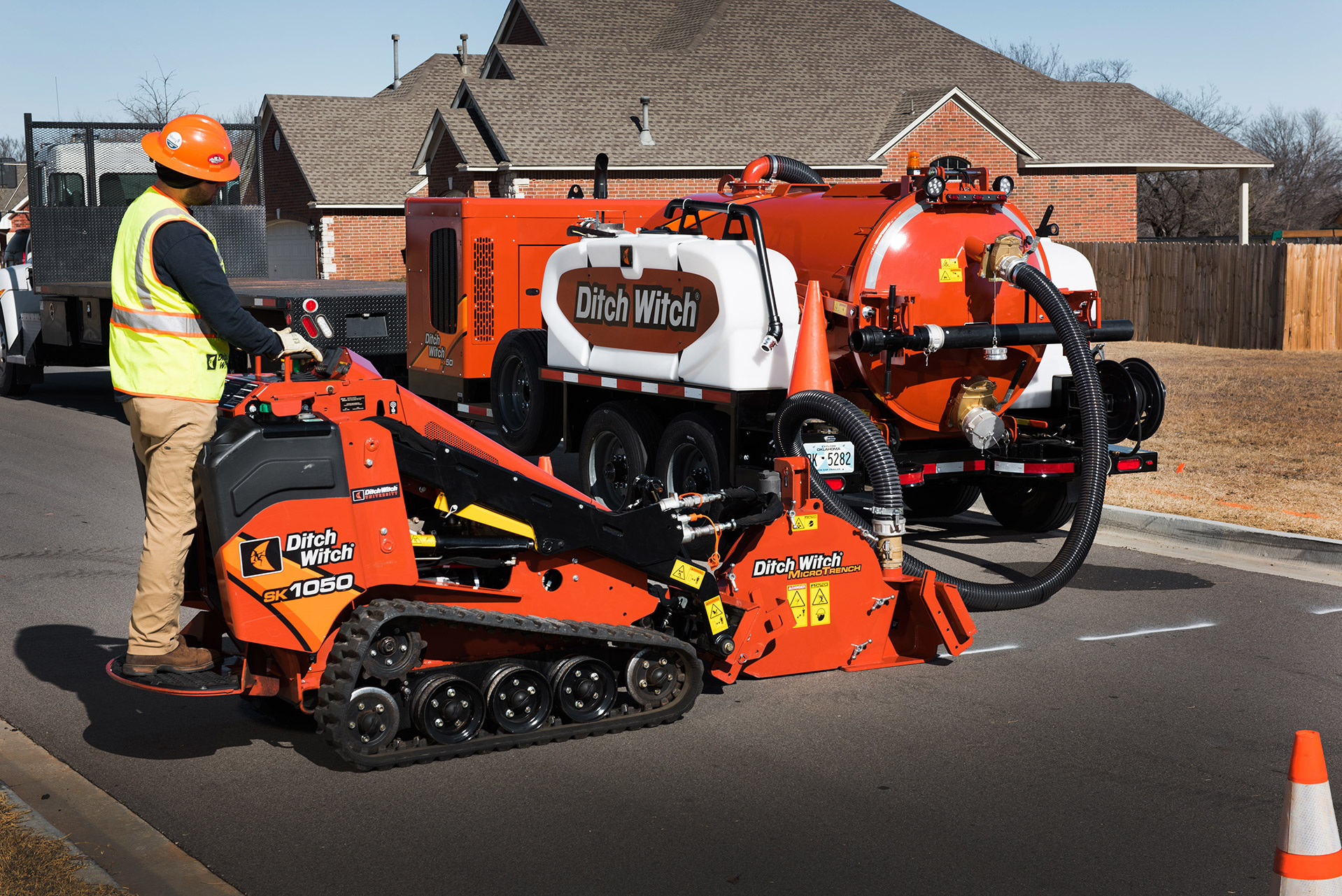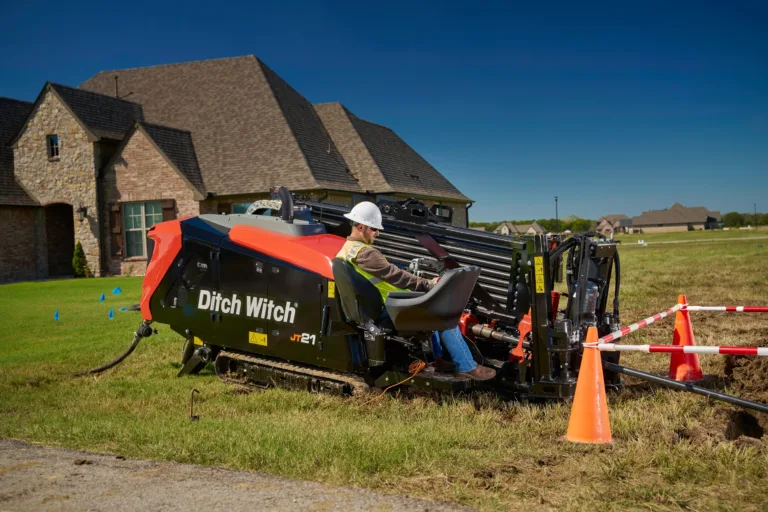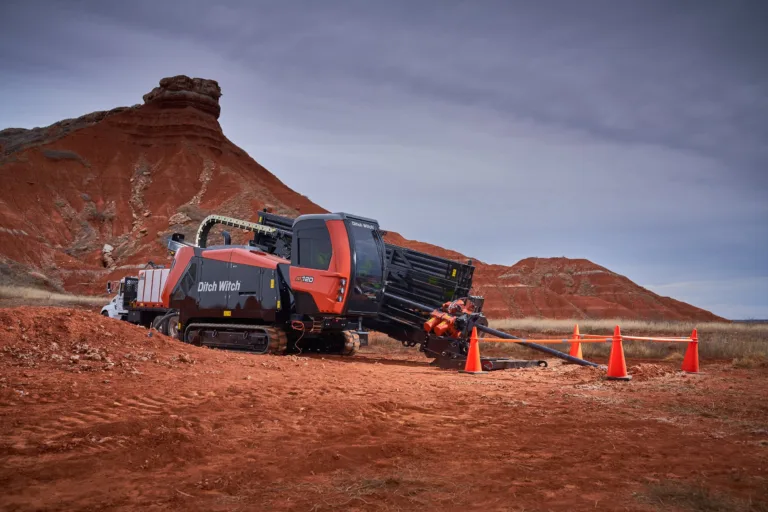By Ditch Witch
Featured in: Rental Management
Working underground comes with big risks for crews. On construction jobs below the surface, there’s always a chance of hitting a utility line if safety rules aren’t followed. With more people needing high-speed internet, new fiber lines are being added to the already crowded network of underground utilities beneath cities everywhere.
Due to the current use of small-diameter, fiber-optic cable, microtrenching has become a preferred method on many fiber installation jobs. Not only is microtrenching more cost-effective and less disruptive than traditional methods of installation, but the solution avoids interference with most existing underground utilities. Microtrenching cuts shallower trenches between 4 and 16 inches deep – above the underground webs of many sensitive gas and water lines. Although the method boasts a lower risk of interfering with underground utilities, just like other excavation methods, there are potential hazards associated with microtrenching. By understanding the risks and following these guidelines, underground crews can safely and successfully complete their microtrenching projects.
1. Protect Yourself
A safe and successful job starts with protecting yourself. Cutting materials such as concrete, sand, or rock containing quartz can produce crystalline silica particles, also known as silica dust. Exposure to silica dust can cause lung damage. It’s important for contractors and operators to follow OSHA’s updated guidelines for exposure to respirable silica dust. The new stricter ordinances require employers to monitor employee exposure, provide respirators and or use dust controls.
2. Prepare and Communicate with Your Crew
Preparing for the job is another critical element. Microtrenching occurs on roadways and neighborhood streets, which require traffic and pedestrian control. Workers must be mindful and follow local traffic control requirements when planning for the job. With multiple pieces of moving equipment and crew members spread across the construction site, it’s also important for the crew to effectively communicate.
All workers should be fully aware of all active equipment to avoid accidents. With a train of vehicles, it only takes one distraction to cause a collision. Individuals on the ground should remain a safe distance from the equipment and communicate with the operators to ensure the entire crew is in sync. As an added benefit, microtrenchers tend to be quieter than other heavy construction equipment. Having a lower-noise microtrencher and a vacuum excavator can make it easier for crews to communicate, and reduce disturbance on residential jobsites.
3. Identify Underground Utilities
Even with microtrenching, there’s always a risk of striking a utility located just below the surface. Before a job begins, crews must be sure to locate all underground utilities. Contact One Call, and any utility services that do not participate in One Call, in advance of the job. Once the utilities are marked, expose any that will be crossed or approached using soft excavation to verify location and depth. For utilities located under asphalt, concrete or other hardscapes, a coring drill, such as the Utilicor MC-450 coring attachment on a Ditch Witch SK1750 mini skid steer, used in conjunction with a vacuum excavator, can also be utilized to expose utilities in roadways.
The most important component of safety on any jobsite is the operator. By being responsible and following these guidelines along with the operator’s manual, operators can help ensure microtrenching jobs are completed safely, on time and on budget.
For more information about jobsite safety, visit https://www.ditchwitch.com/safety.






